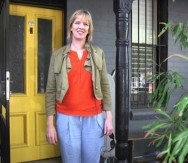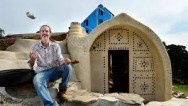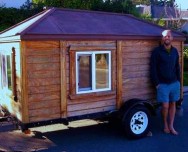
Cutting your Carbon Footprint
Suppose you believe that man-made Carbon emissions are bad for the planet. What do you do about it? Some eminent experts say that individuals can do little or nothing to reduce global pollution and its all down to governments and giant corporations.
Others say that you have to start somewhere, and if the corporations and busybody Governments won’t act, we the people can shame them.
Our view is somewhere in between – its sensible to reduce consumption especially for those of us in Western society who have been over-consuming for decades.
Here is a handy guide to what you can do. It happens to overlap neatly with many of the things people do when they live off-grid – in order to save both money and resources.
Fly less:
Flights account for an eighth of all transport carbon emissions. Trains and phone/web calls are less intensive alternatives.
Drive less and better:
Use fuel-efficient modern cars, share and drive in a higher gear. Public transport is better and walking best of all — including for health.
Eat less meat:
The shift from animal to plant-based protein reduces energy required to produce food, reduces methane emissions from livestock — and is healthier.
Waste less food:
A third of food globally is wasted, or 1.3bn tonnes a year. Freeze food nearing expiry, don’t cook too much and use leftovers.
Keep clothes longer:
Wash clothes less often and at lower temperatures to extend their life; sell or donate them when no longer wanted.
Buy fewer things: Electrical goods use energy, but products also have a significant “embodied” carbon impact from their manufacture and transport. Cut down, buy longer-lasting products and resell or donate after use.
Recycle more: Throwing out means the need for replacement production; and waste in landfills produces methane emissions. Rinse, separate and recycle.
Use less water:
Shower for a shorter time, wash up in a bowl not with a running tap, use economy settings in washing machines, steam cook.
Use less heat: Save money and waste by setting thermostats at 18-21C and turned off when out; use insulation; install solar panels.
Use less power: Use LED bulbs; turn off lights and standby on devices when not in use; don’t heat more water in a kettle than needed; limit air-conditioning.…





![WELCOME to Martin Freney’s new home. [/caption]WELCOME to Martin Freney’s new home. It’s built from earth-filled tyres, bottles and straw barrels, uses solar power, rainwater and recycled sewage and just might be an indicator of the future of Australian housing.
The University of South Australia lecturer is adding the finishing touches to his fully sustainable home, one of the first of its kind in Australia.
The council-approved home runs off the grid of public utilities companies and uses no fossil fuels for power, instead harnessing solar energy and thermal ventilation principles to regulate inside temperature.
His Earthship, a 30-minute drive from Adelaide, has taken five years to build and aside from a few minor features has been constructed purely with the help of volunteers.
Mr Freney said he built the home to expose Australians to the Earthship concept, a house design invented in Germany.
“It’s a wonderful solution to many of our modern problems,” Mr Freney said. “Earthships are made only from natural or recycled materials and draw nothing from local water or power sources. They require no conventional heating but are comfortable in any weather. It could be minus 20 outside and you wouldn’t know.” Mr Freney’s home is designed for two people and includes all the features of a standard house, along with a hot tub and a walk-in wardrobe behind a dry mud wall infused with used bottles. Toilets are flushed with filtered sink, shower and bath water, which also irrigates food-producing plants in the home’s greenhouse.
Drinking water is collected off the roof, which channels rainwater into a cistern. Sewage water is sent to a septic tank for cleaning and later used to water the nearby landscape. Although electricity is derived from solar panels and stored in batteries, Mr Freney said little power was needed.
“The idea behind the tyre and earth walls is that they soak up heat during the day and radiate that heat at night. That’s how they stay so comfortable,” he said. Mr Freney’s home has inspired others to pursue similar projects across Australia.
</p/>
</a>…</p> </div>
<a class=](https://off-grid.net/wp-content/uploads/2015/04/freney.jpeg) Read More »
Read More » 
